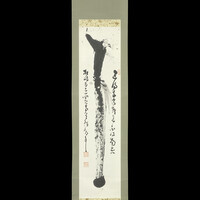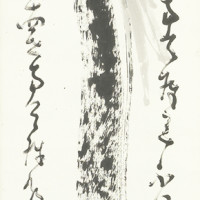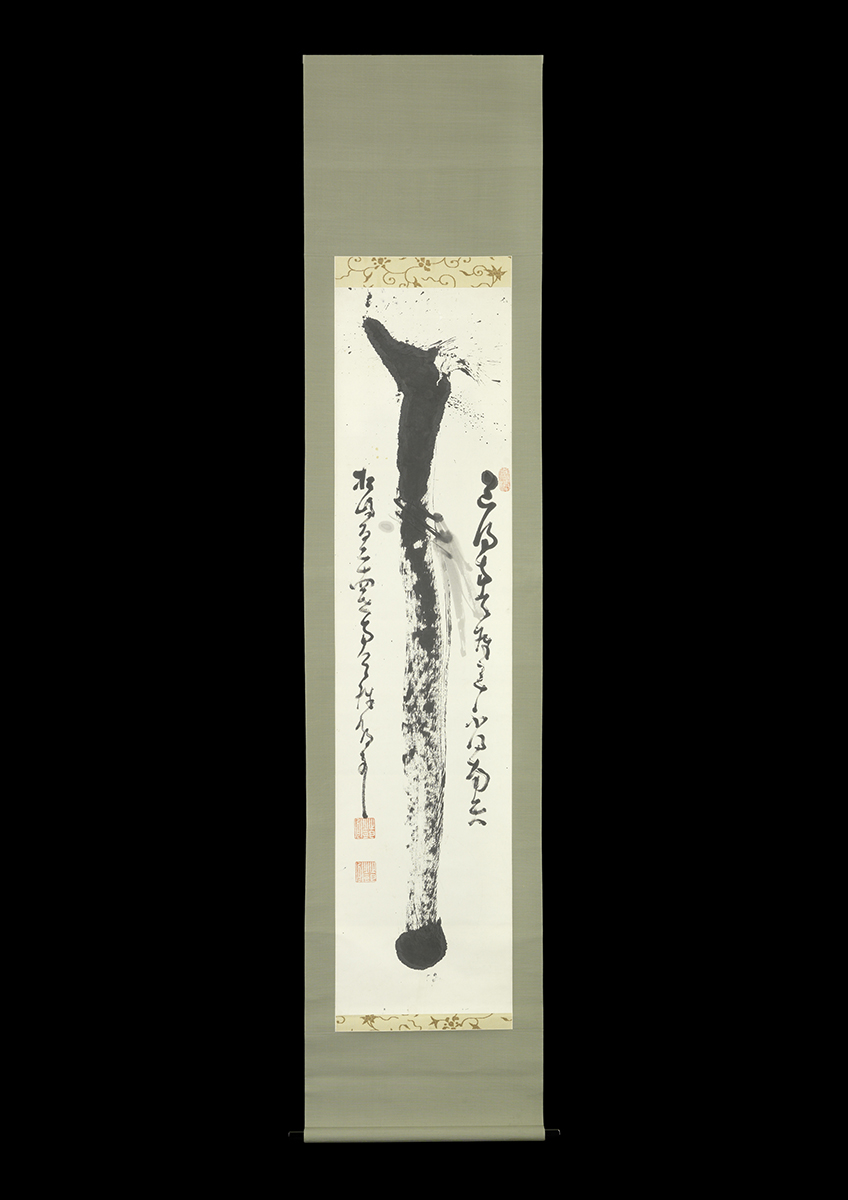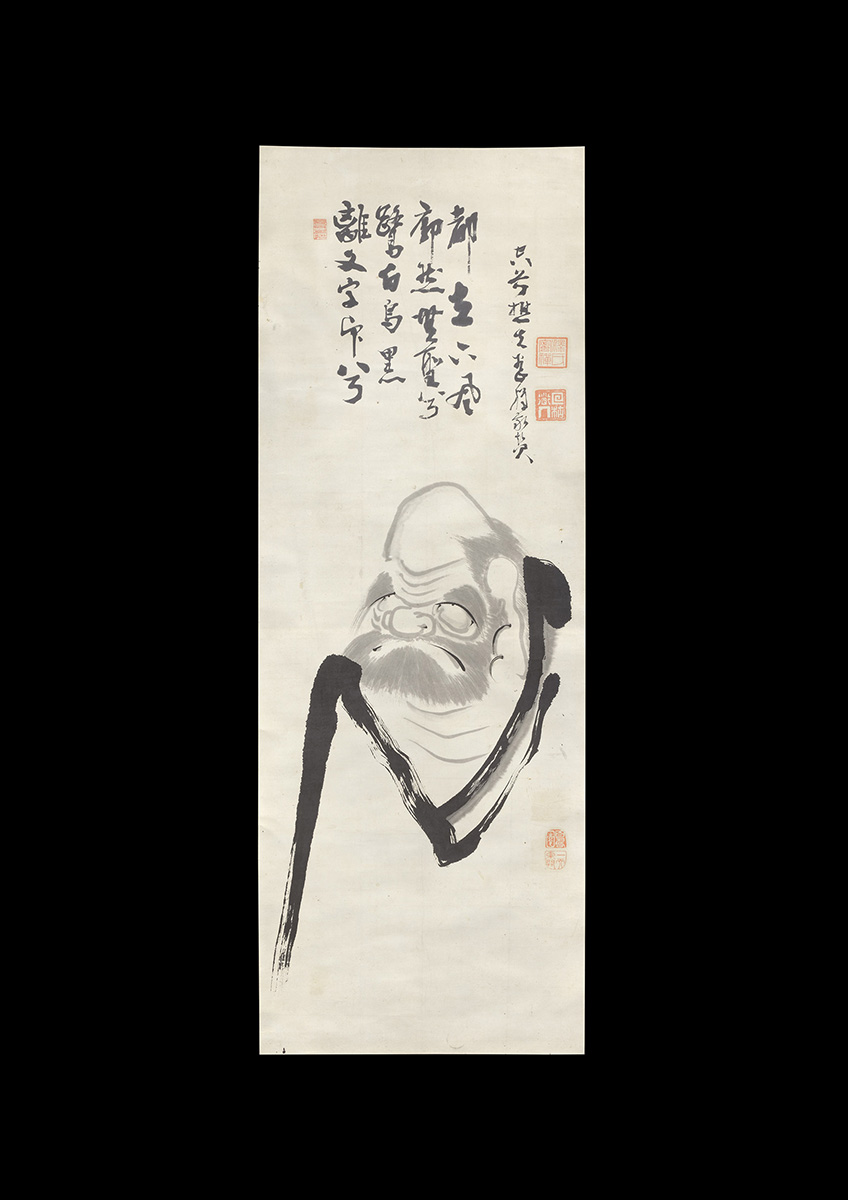Stick
Nakahara Nantenbō / Paintings


- Contact Us
-
Material
Ink on paper, silk mounting
-
Size
137.5 (h) x 33.3 cm (204 (h) x 45.2 cm
-
Period
Meiji-Taishō (1891-1925)
-
Box
Awase-bako
Description
Stick by Nakahara Nantenbō (1839-1925)
Signed Matsushima the 124th Nantenbō Tōshū
Very similar paintings are in LACMA (Los Angeles County Museum of Art) and in NGV (National Gallery of Victoria museum)
https://www.ngv.vic.gov.au/essay/nakahara-nantenbos-the-stick-of-nantenbo-nanten-staff-2/
https://collections.lacma.org/node/213260
This scroll depicts a stick which is very important tool for the Zen masters.
The Zen priests used a stick when they went on a walking pilgrimage. It was used to help walking, but also used for sounding the depth of river or groping around when they went into the trackless paths. And it was also used when they preached sermon on depicting ensō or beating the disciples for training. To sum up, the stick is an important image of training. There is no end of training for the Zen priest, and because of that, the stick is an important tool for them. That is why so many priests took it as a motif of Zen paintings. And Nantenō was no exception.
The ink spray of the first stroke splashes. The thick stick was drawn without lifting the brush from the paper. The traces of tatami by blur make a nice landscape. The last stop of brush is clear and strong. All his painting has no hesitation.
“Matsushima” in his signature means the Matsushima-Zuigan-ji temple in Miyagi prefecture. Nantenbō was the 124th chief priest of this temple from 1891, Meiji 24. It can be assumed that this piece was painted at his later years from this signature.
Inscription
道得南天棒道不得南天
松島百二十四世南天棒鄧州
" You get the beats with stick even if you could answer, and you get the beats also even if you don’t answer "


